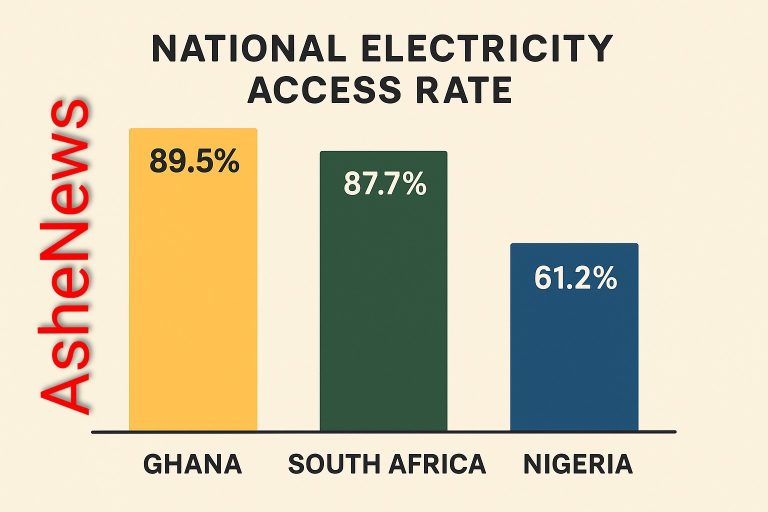As of 2025, electricity access rates in key African countries show notable progress but also reveal ongoing challenges. Ghana leads with a national electricity access rate of 89.5%, followed closely by South Africa at 87.7%. Nigeria, Africa’s most populous country, trails with a significantly lower access rate of 61.2%.
Ghana’s relatively high electricity access reflects substantial efforts in expanding its power generation and distribution capacities. The country’s energy mix is dominated by hydropower, thermal energy, and gas, with growing investments in renewables such as solar. Ghana has achieved about 74% electrification in rural areas and 94% in urban zones, with ambitions to reach universal access soon and even export electricity to neighboring Nigeria.
South Africa’s electricity access of 87.7% is supported mainly by coal generation, though the country is actively pursuing renewable energy sources to reduce coal reliance from the current dominant 60% and raise renewables to 25% by 2030. Urban areas enjoy higher access rates compared to rural regions, where infrastructure challenges persist.
In contrast, Nigeria’s electricity access rate at 61.2% reflects systemic difficulties. Despite a generation capacity of about 13,000 megawatts, the country only delivers around 4,700 MW effectively due to aging infrastructure, transmission losses, and regulatory challenges. Rural electrification remains low, exacerbated by poverty, funding constraints, and policy issues. This electricity deficit hampers Nigeria’s socio-economic development, even as it supplies natural gas to Ghana’s power plants.
The disparity among these countries highlights broader regional energy challenges in Africa: while nations like Ghana and South Africa make strides in electrification, Nigeria’s power sector struggles with chronic inefficiencies and infrastructure decay. Efforts across West Africa to create interconnected power pools aim to improve stability and access, positioning Ghana’s forthcoming electricity export capacity as potentially transformative.
In summary:
- Ghana: 89.5% access, driven by diverse energy sources and rural electrification efforts.
- South Africa: 87.7% access, coal-based large infrastructure with a clear renewable transition plan.
- Nigeria: 61.2% access, limited by generation bottlenecks, poor grid infrastructure, and regulatory hurdles.
Improving electricity access remains critical for economic growth, especially in Nigeria, where addressing the power sector crisis could unlock significant development potential.
Source: Energy Capital Power, Statisfrica


